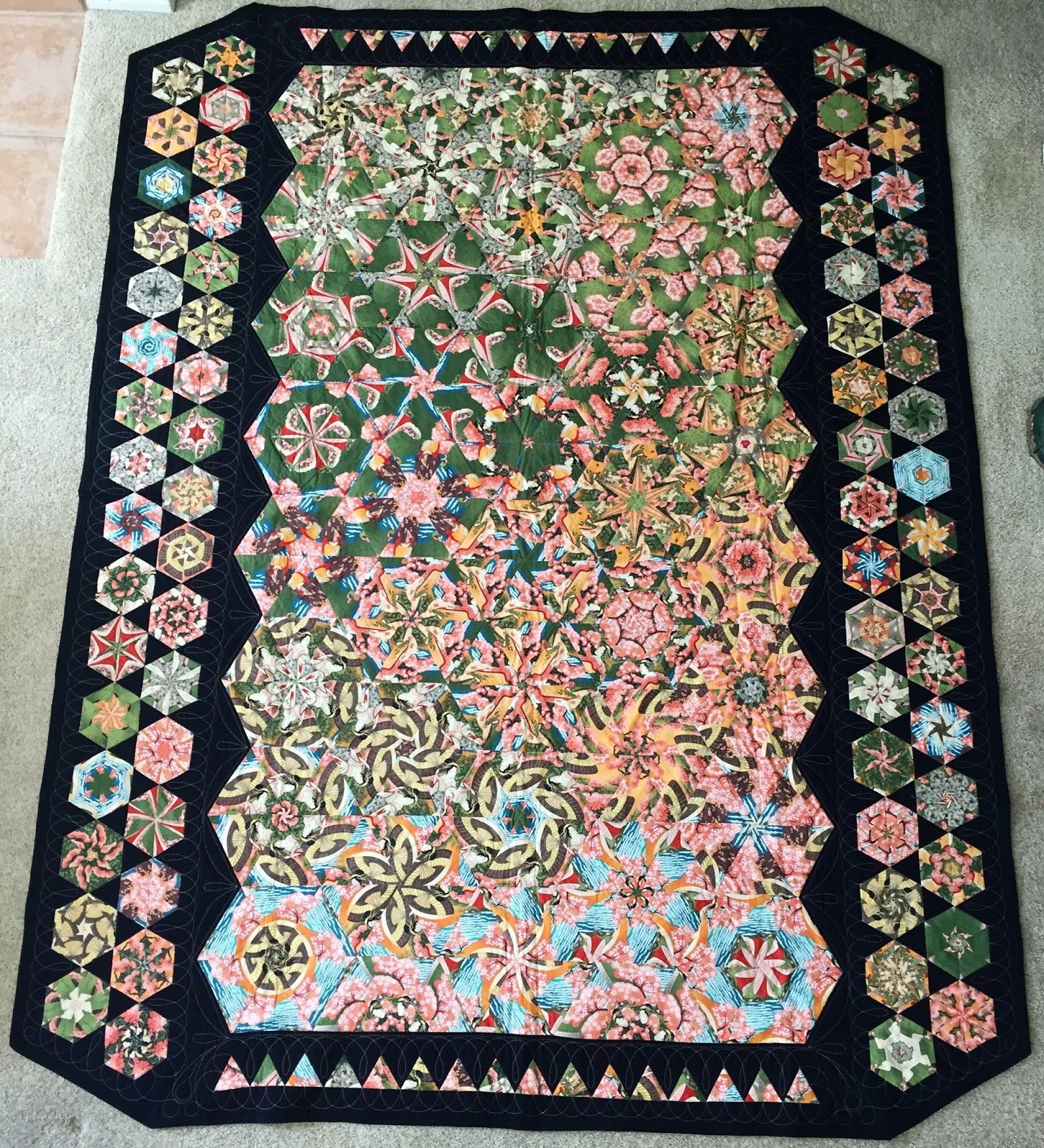Linen Closet: Geisha Kaleidoscope
Linen Closet- Geisha Kaleidoscope
This quilt was started in 2009 and finished in 2015. It was inspired by Maxine Rosenthal's book, One Block Wonders. The basic block is composed of six triangles which form a hexagon. The center blocks measure 10.5 inches across.
The kaleidoscope effect is achieved with a technique called "fussy cutting". You begin with a large repeat patterned fabric. This was the one I chose:
It has some lovely, small details and large, solid textured spaces which create a great contrast in this fabric design. The result was really interesting. It produced pretty blocks that highlighted different areas of the scene. Viewing these blocks side-by-side, it is as if you are looking across the original design through a kaleidoscope.
You begin by dividing the fabric into strips at the exact same point in the repeat of the design. The width of these strips will vary depending on the size of the pattern unit. Note that a pattern which repeats every six inches will yield cut triangles with a height of six inches, or smaller. So, the larger the space between repeats the more options for fussy cutting you will have.
Stacking six lengths of these strips, you match up the pattern on each layer. If the strips all line up, you will have six pattern matching triangles when you cut through the layers.
Sounds like a lot of work? Not gonna lie, it is.
But, it's also fun to see what new patterns emerge with this technique. I loved what was happening with this fabric in the large hexagons so much that I almost didn't want to sew them together.
I decided to create smaller hexagons that measure about 4.5 inches across to float against the black and show off the kaleidoscopic effect in individual blocks along the edge.
Geisha Kaleidoscope
This quilt was started in 2009 and finished in 2015. It was inspired by Maxine Rosenthal's book, One Block Wonders. The basic block is composed of six triangles which form a hexagon. The center blocks measure 10.5 inches across.
The kaleidoscope effect is achieved with a technique called "fussy cutting". You begin with a large repeat patterned fabric. This was the one I chose:
It has some lovely, small details and large, solid textured spaces which create a great contrast in this fabric design. The result was really interesting. It produced pretty blocks that highlighted different areas of the scene. Viewing these blocks side-by-side, it is as if you are looking across the original design through a kaleidoscope.
You begin by dividing the fabric into strips at the exact same point in the repeat of the design. The width of these strips will vary depending on the size of the pattern unit. Note that a pattern which repeats every six inches will yield cut triangles with a height of six inches, or smaller. So, the larger the space between repeats the more options for fussy cutting you will have.
Stacking six lengths of these strips, you match up the pattern on each layer. If the strips all line up, you will have six pattern matching triangles when you cut through the layers.
Sounds like a lot of work? Not gonna lie, it is.
But, it's also fun to see what new patterns emerge with this technique. I loved what was happening with this fabric in the large hexagons so much that I almost didn't want to sew them together.
I decided to create smaller hexagons that measure about 4.5 inches across to float against the black and show off the kaleidoscopic effect in individual blocks along the edge.







Comments
Post a Comment